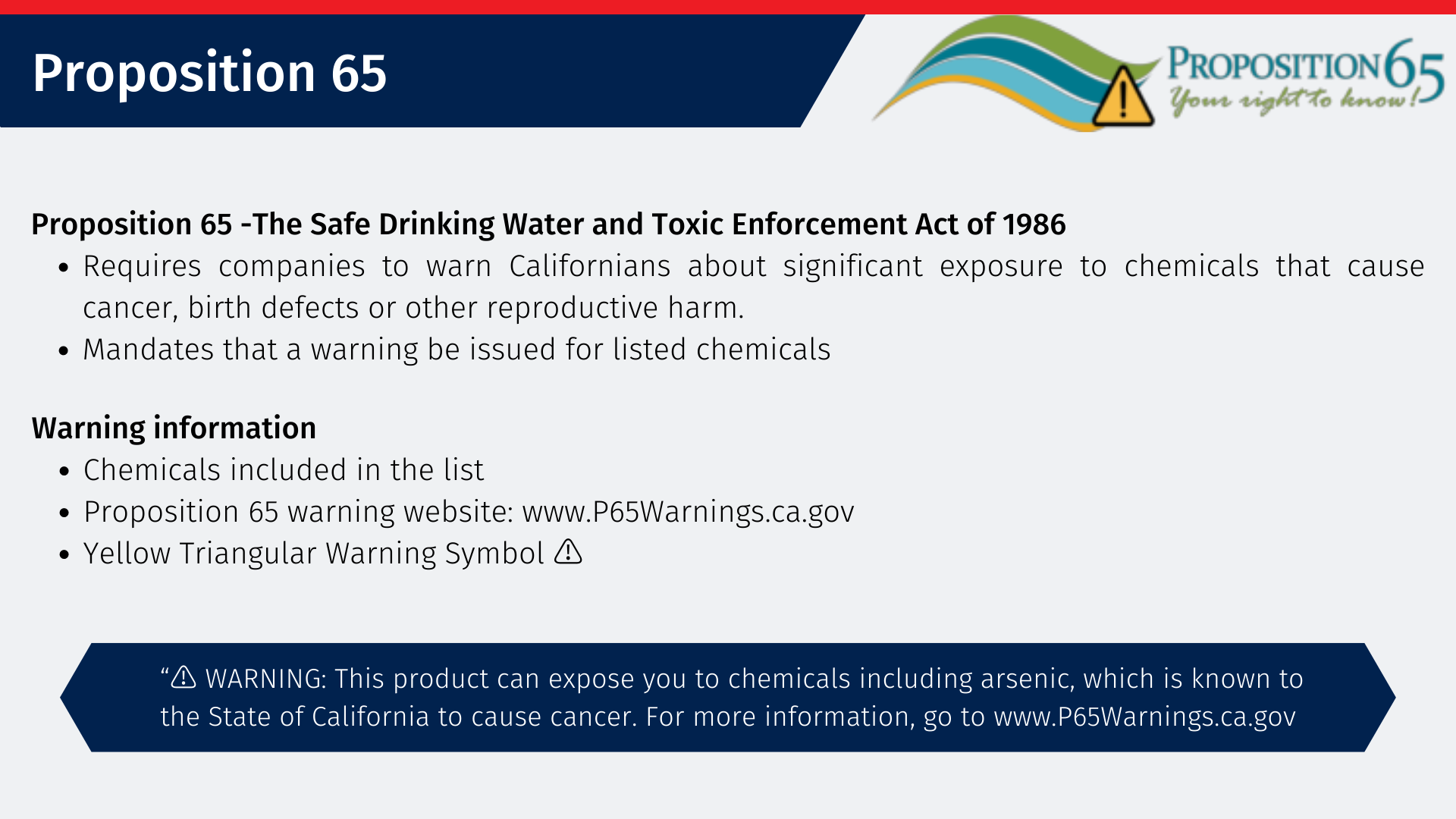Cosmetic Regulation in California

In publication #005 of KosmetikOn Education we deal in depth with cosmetic regulations in California. Indeed, in the United States, the states can impose additional cosmetic standards to those already put in place by the FDA. First of all, we present you the California Safe Cosmetics Program (CSCP) and its mandatory report. We continue with the Proposition 65 and its list of restricted ingredients. Finally, we finish with the Health and Safety Code.
California Safe Cosmetics Program (CSCP)
Presentation and objective
California is the first state that requires companies to report harmful ingredients used in cosmetics. The primary goal of the California Safe Cosmetics Program (CSCP) [1] is to collect information on hazardous and potentially hazardous ingredients in cosmetic products sold in California and to make this information available to the public. Consumers and salon workers everywhere can use the California Safe Cosmetics Product Database to learn more about the products they use. The California Safe Cosmetics Program (CSCP) is charged with implementing CSCA and CFFIRKA.
The California Safe Cosmetics Act of 2005 (CSCA) [2] requires manufacturers, packers, and/or distributors of cosmetic products to report to the California Department of Public Health (CDPH) all products sold in California, which contain ingredients known or suspected to cause cancer, birth defects, or other reproductive harm. The Cosmetic Fragrance and Flavor Ingredient Right to Know Act of 2020 (CFFIRKA) [3] requires companies to report products with specific fragrance and flavor ingredients after Jan. 1, 2022. CSCP has compiled those ingredients into the Reportable Ingredient List (Excel) [4]. This list contains three different types of ingredients considered hazardous:
CMR (Carcinogenic, Mutagenic, Reprotoxic) (including unbound particles of respirable size of titanium dioxide or crystalline silica, undecolorized aloe vera, etc.)
Substances included in the Prop 65 list
Fragrance allergens if ≥ 0.01% in a rinse-off cosmetic product or ≥ 0.001% in a leave-on cosmetic product.
This database counts at the moment: 108972 registered products, 777 registered companies, 212 ingredients [5].

Criteria and requirements
The companies are subject to mandatory reporting requirements for the California Safe Cosmetics Act of 2005 if they meet the following criteria:
The company makes $1,000,000 or more annually in worldwide aggregate cosmetic sales
The company name appears on the label of a cosmetic product sold in California after January 1, 2007
The companies cosmetics contain ingredients indicated on the Reportable Ingredients List (Excel)
To register online for the product notification portal, the company needs the following information:

Proposition 65
The Proposition 65, officially known as the Safe Drinking Water and Toxic Enforcement Act of 1986 [6], requires businesses to provide warnings to Californians about significant exposures to chemicals that cause cancer, birth defects or other reproductive harm. These chemicals can be in the products that Californians purchase, in their homes or workplaces, or that are released into the environment. By requiring that this information be provided, Proposition 65 enables Californians to make informed decisions about their exposures to these chemicals.
By law, a warning must be given for listed chemicals unless the exposure is low enough to pose no significant risk of cancer or is significantly below levels observed to cause birth defects or other reproductive harm.
New California Office of Environmental Health Hazard Assessment (OEHHA) [7] regulations, adopted in August 2016, requires a new warning to be issued for listed chemicals. For example, the new warnings for consumer products now state that the product “can expose you to” a Proposition 65 chemical rather than saying the product “contains” the chemical. They also include:
The name of at least one listed chemical that prompted the warning
The Internet address for OEHHA’s new Proposition 65 warnings website, www.P65Warnings.ca.gov which includes additional information on the health effects of listed chemicals and ways to reduce or eliminate exposure to them
A triangular yellow warning symbol ⚠ on most warnings
A sample warning looks like this: ⚠ WARNING: This product can expose you to chemicals including arsenic, which is known to the State of California to cause cancer. For more information, go to www.P65Warnings.ca.gov

Health and Safety
The Health and Safety Code [8] prohibits the use of a list of about 20 ingredients in cosmetic product formulations.

References
California Department of Public Health. California Safe Cosmetics Program (CSCP) available at https://www.cdph.ca.gov/Programs/CCDPHP/DEODC/OHB/CSCP/Pages/CSCP.aspx (July. 2022)
California Legislative Information. California Safe Cosmetics Act of 2005 (CSCA) available at https://leginfo.legislature.ca.gov/faces/codes_displayText.xhtml?lawCode=HSC&division=104.&title=&part=5.&chapter=7.&article=3.5 (July. 2022)
California Legislative Information. Cosmetic Fragrance and Flavor Ingredient Right to Know Act of 2020 (CFFIRKA) available at https://leginfo.legislature.ca.gov/faces/billTextClient.xhtml?bill_id=201920200SB312 (July. 2022)
Reportable Ingredient List (Excel) available at https://cscpsubmit.cdph.ca.gov/submission/assets/files/Reportable_Ingredients_List.xlsx (July. 2022)
California Department of Public Health. Product Notification Portal available at https://cscpsearch.cdph.ca.gov/search/publicsearch (July. 2022)
California Legislative Information. Safe Drinking Water and Toxic Enforcement Act of 1986 available at https://leginfo.legislature.ca.gov/faces/codes_displayText.xhtml?lawCode=HSC&division=20.&title=&part=&chapter=6.6.&article (July. 2022)
California Office of Environmental Health Hazard Assessment available at https://oehha.ca.gov/proposition-65 (July. 2022)
California Legislative Information. Health and Safety Code available at https://leginfo.legislature.ca.gov/faces/billTextClient.xhtml?bill_id=201920200AB2762 (July. 2022)